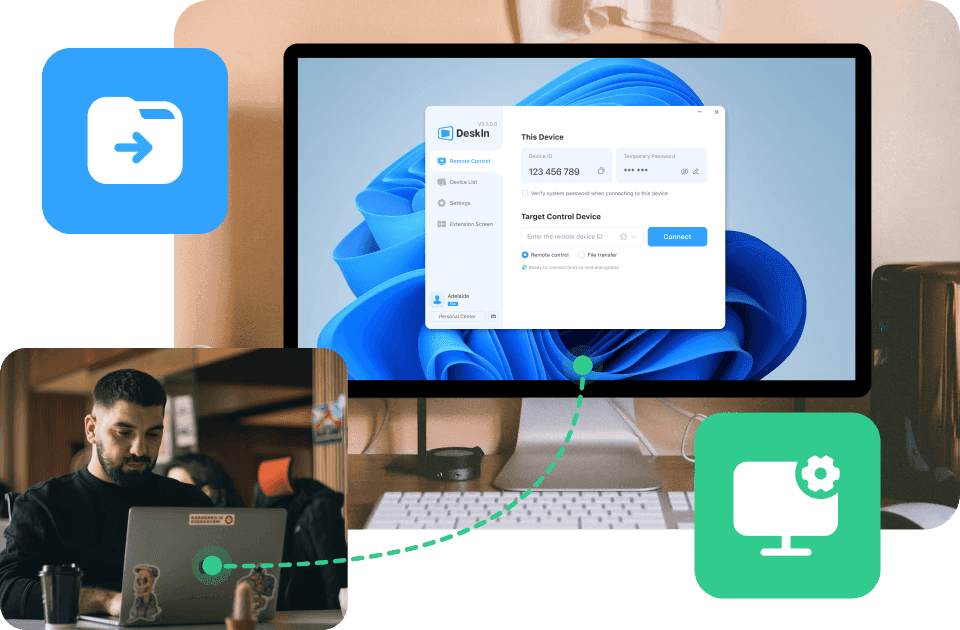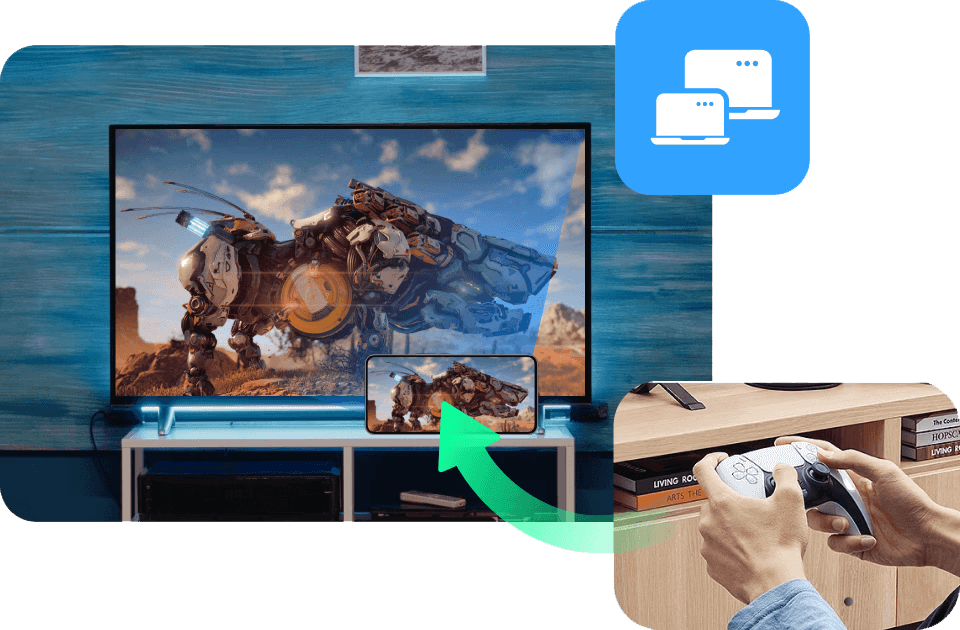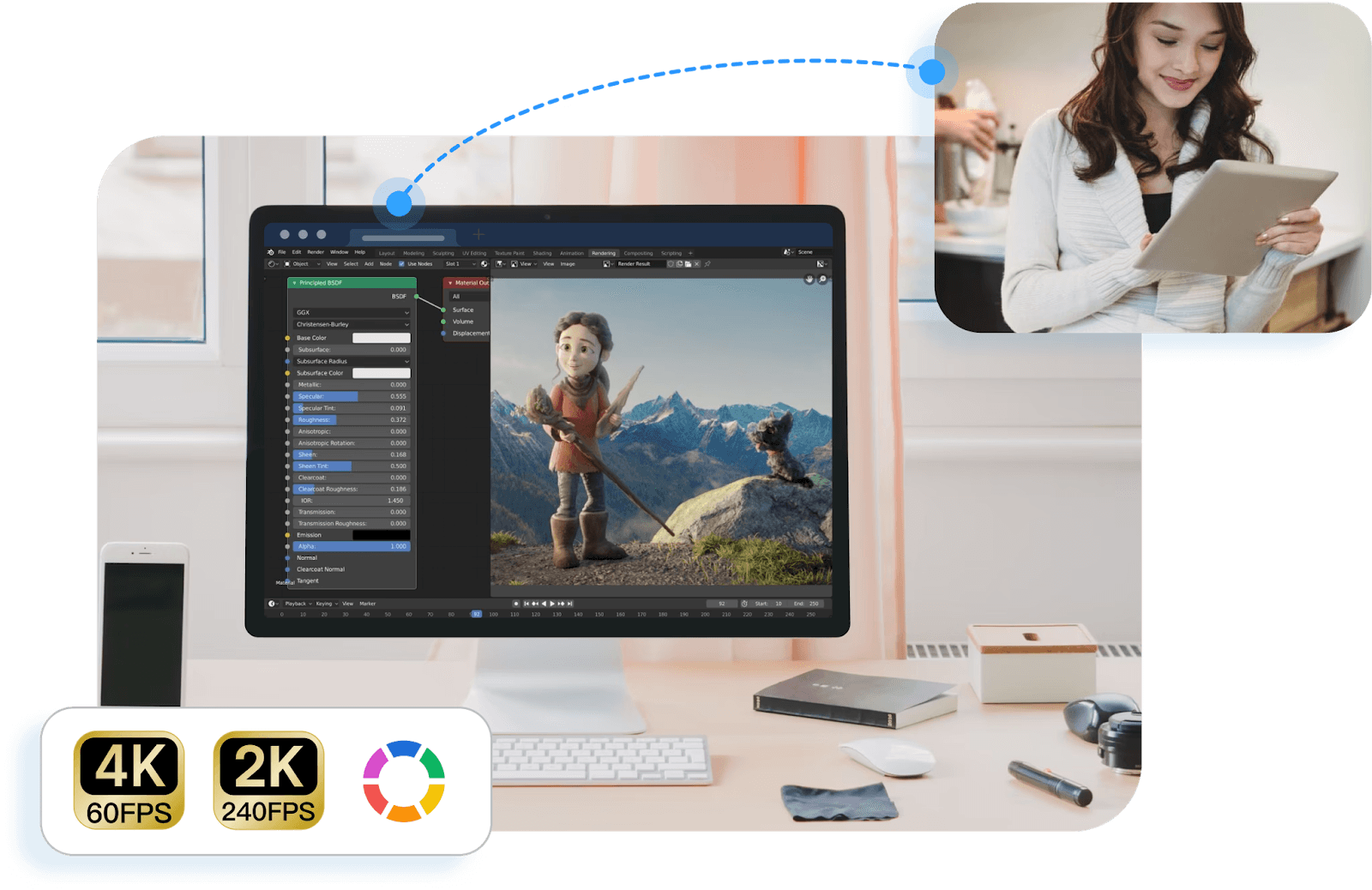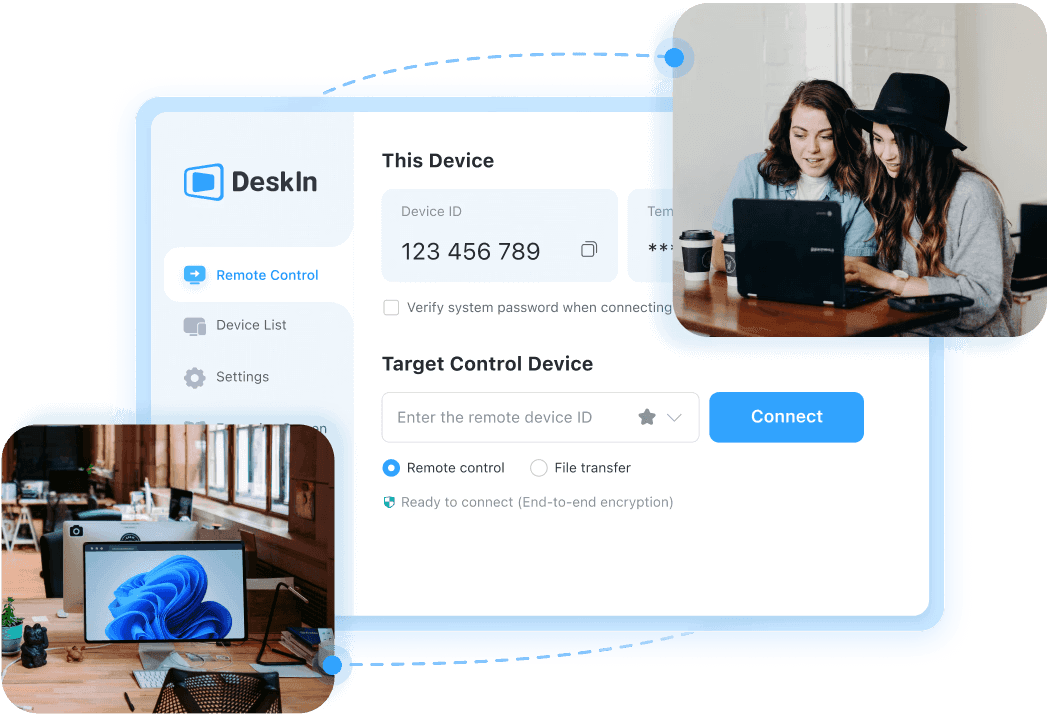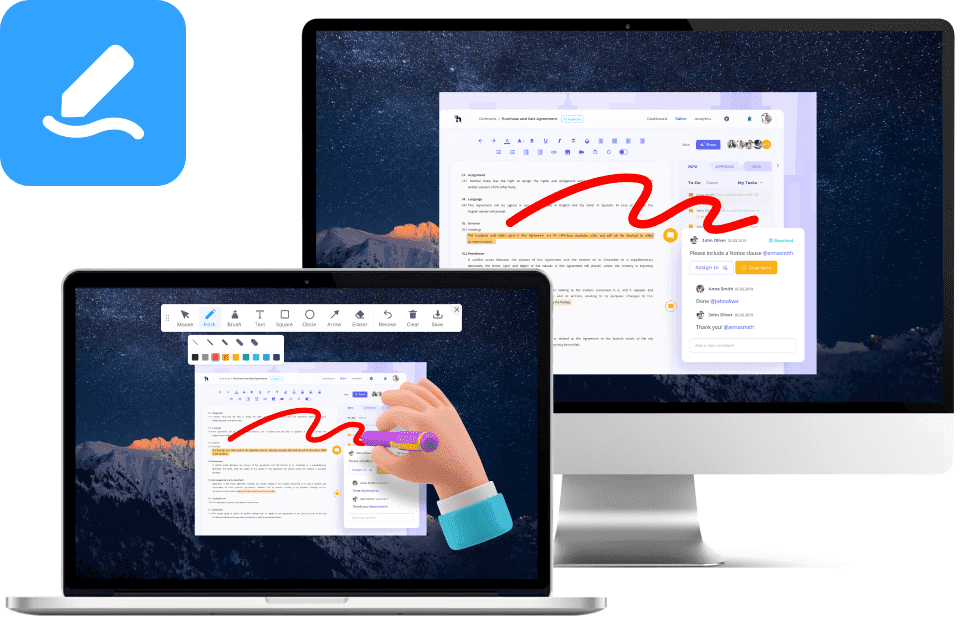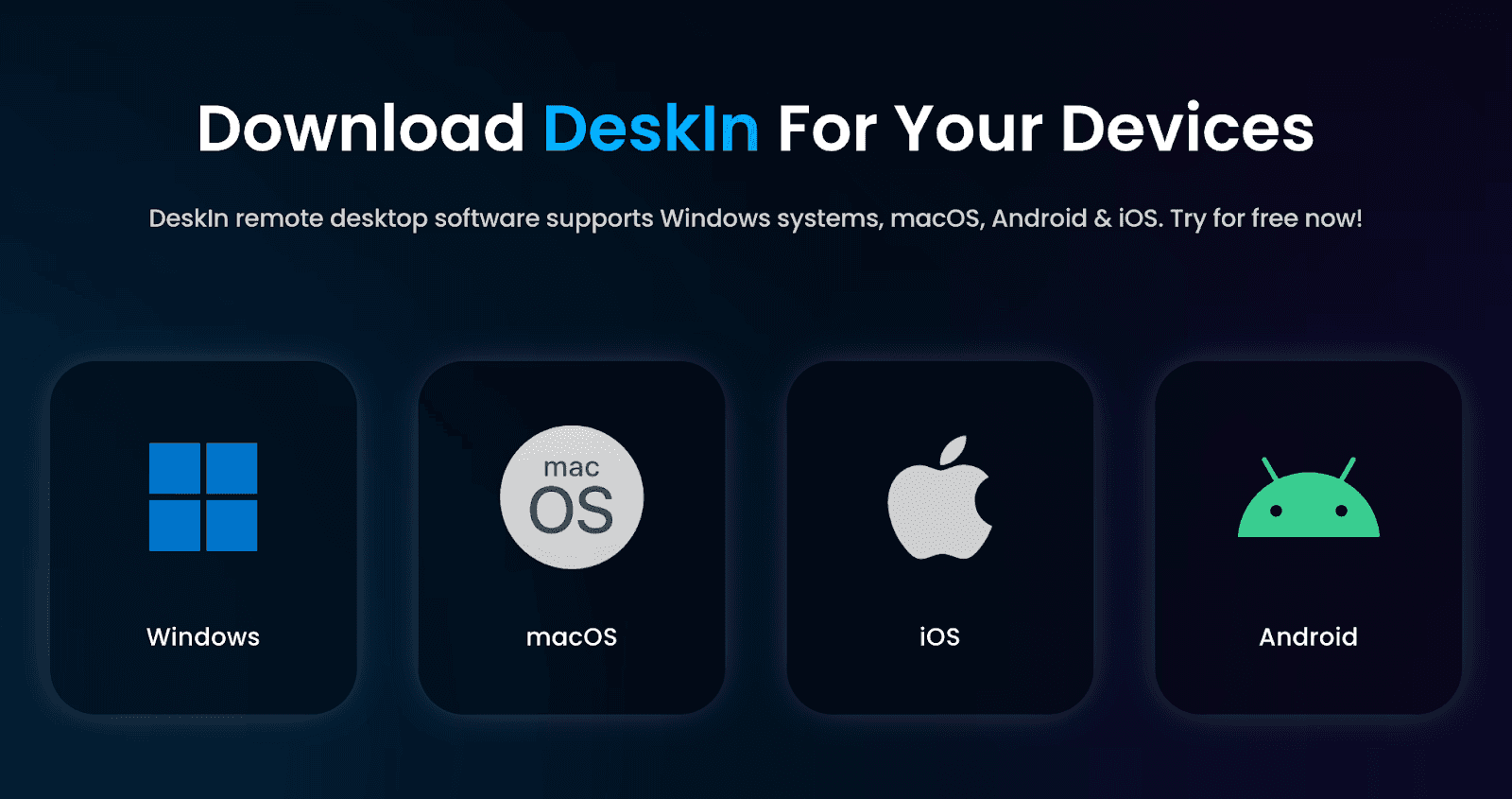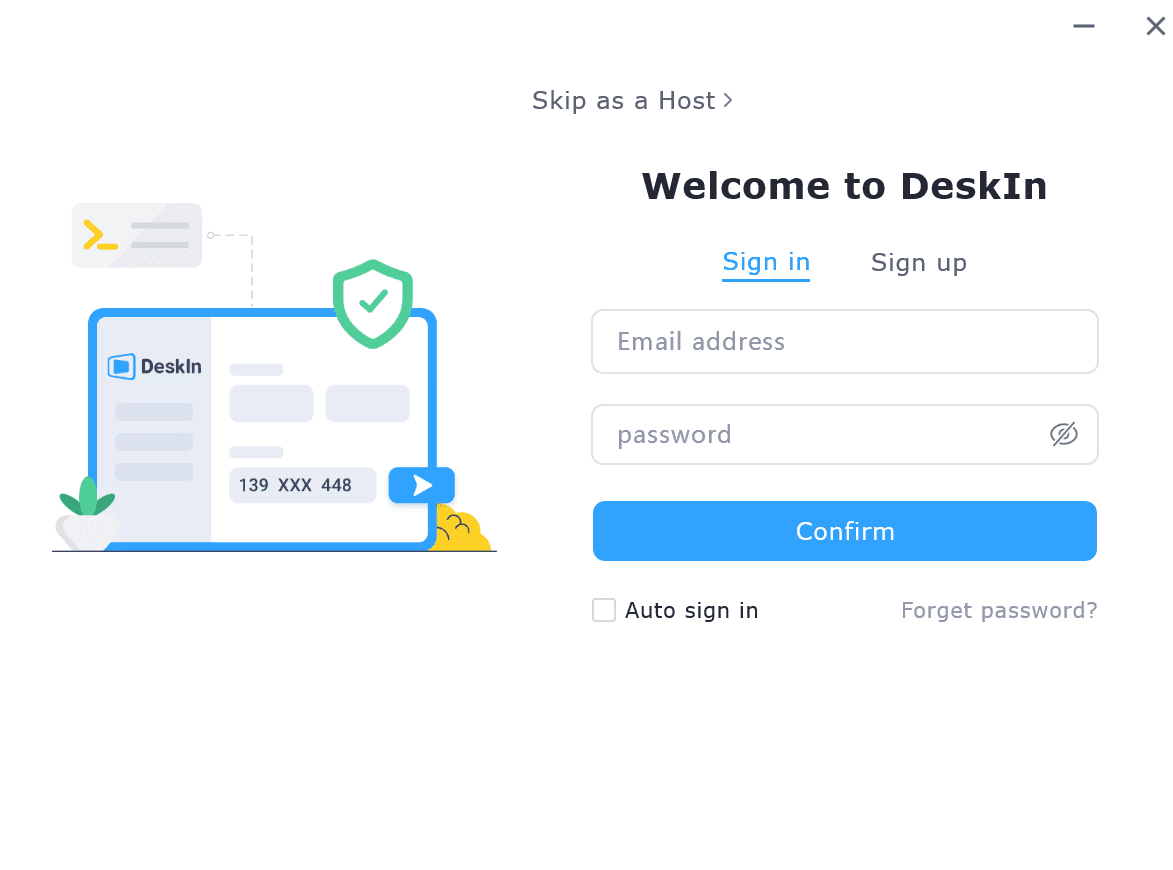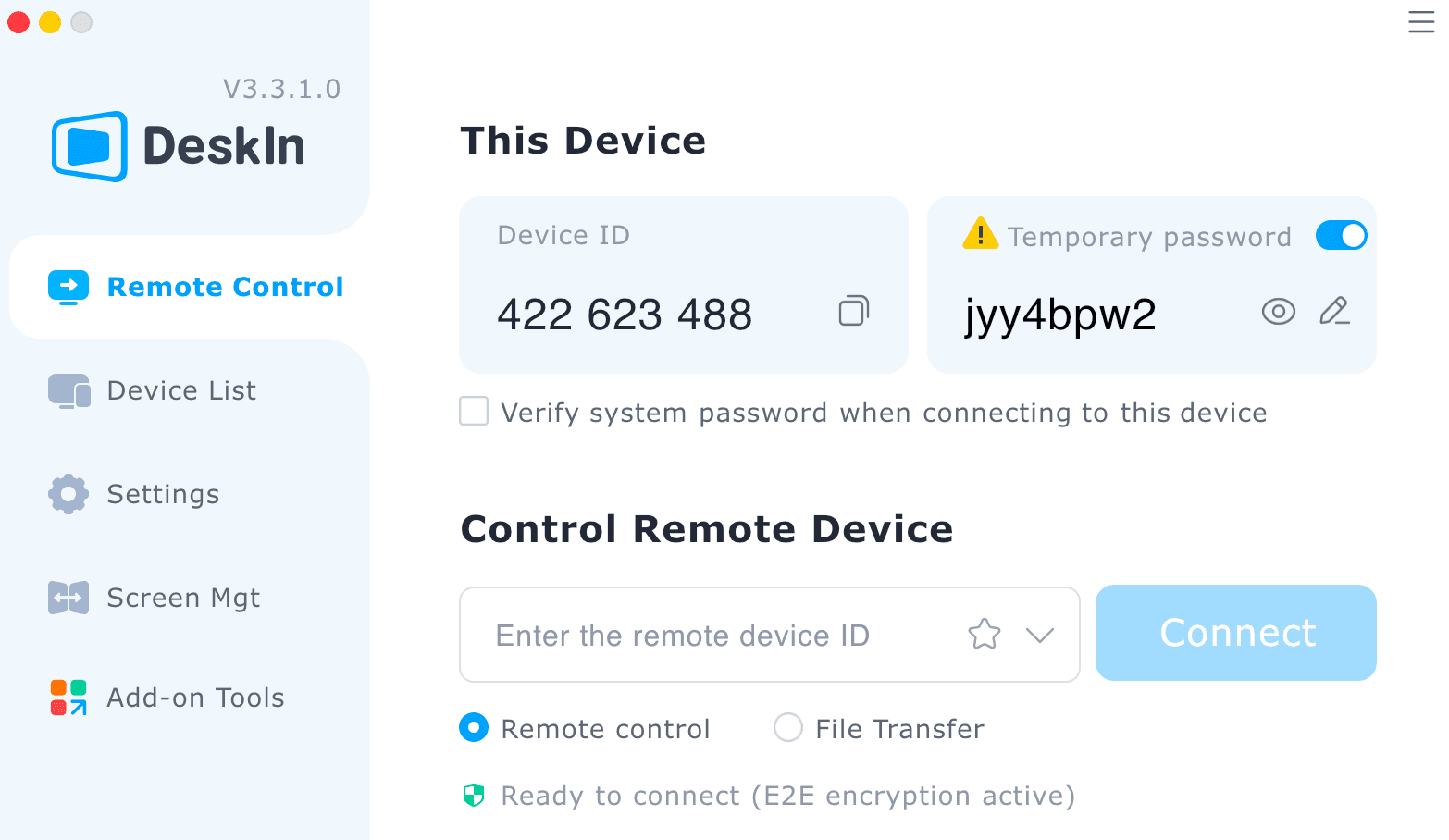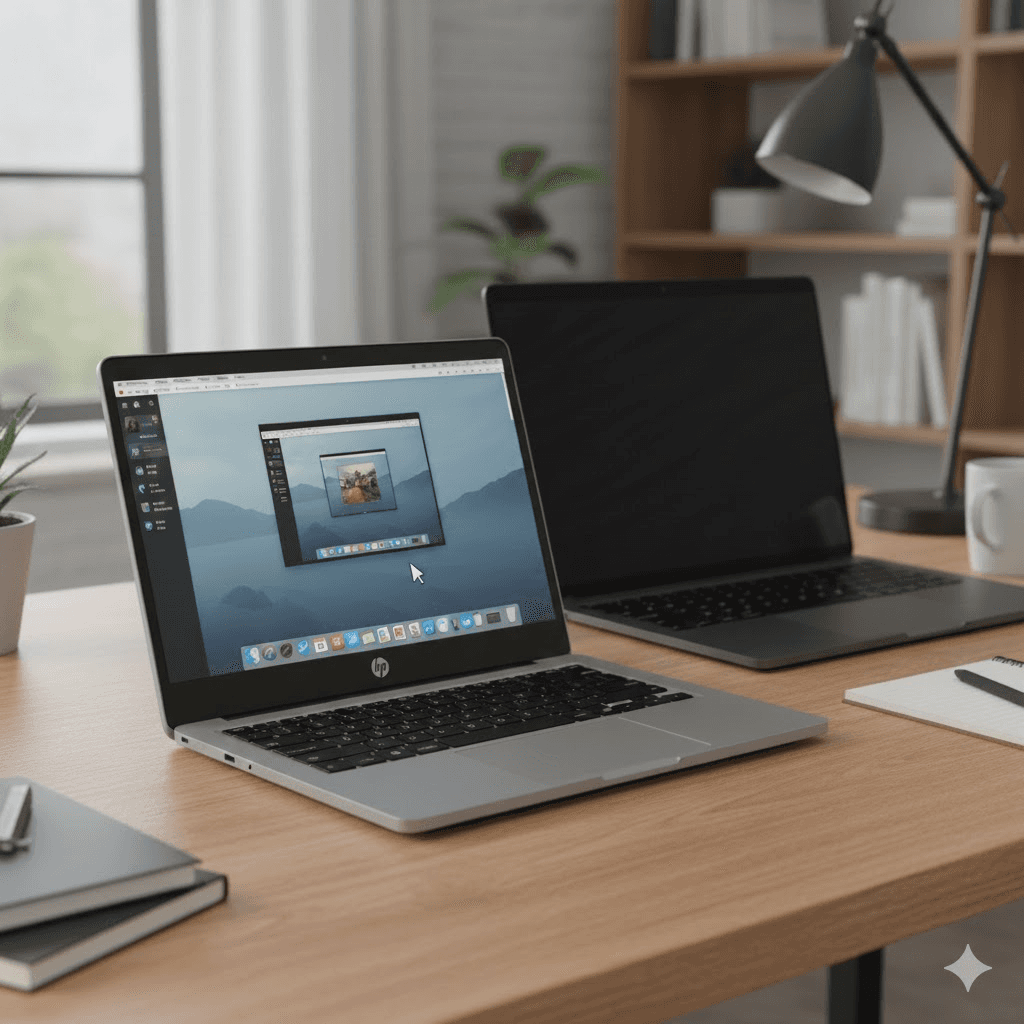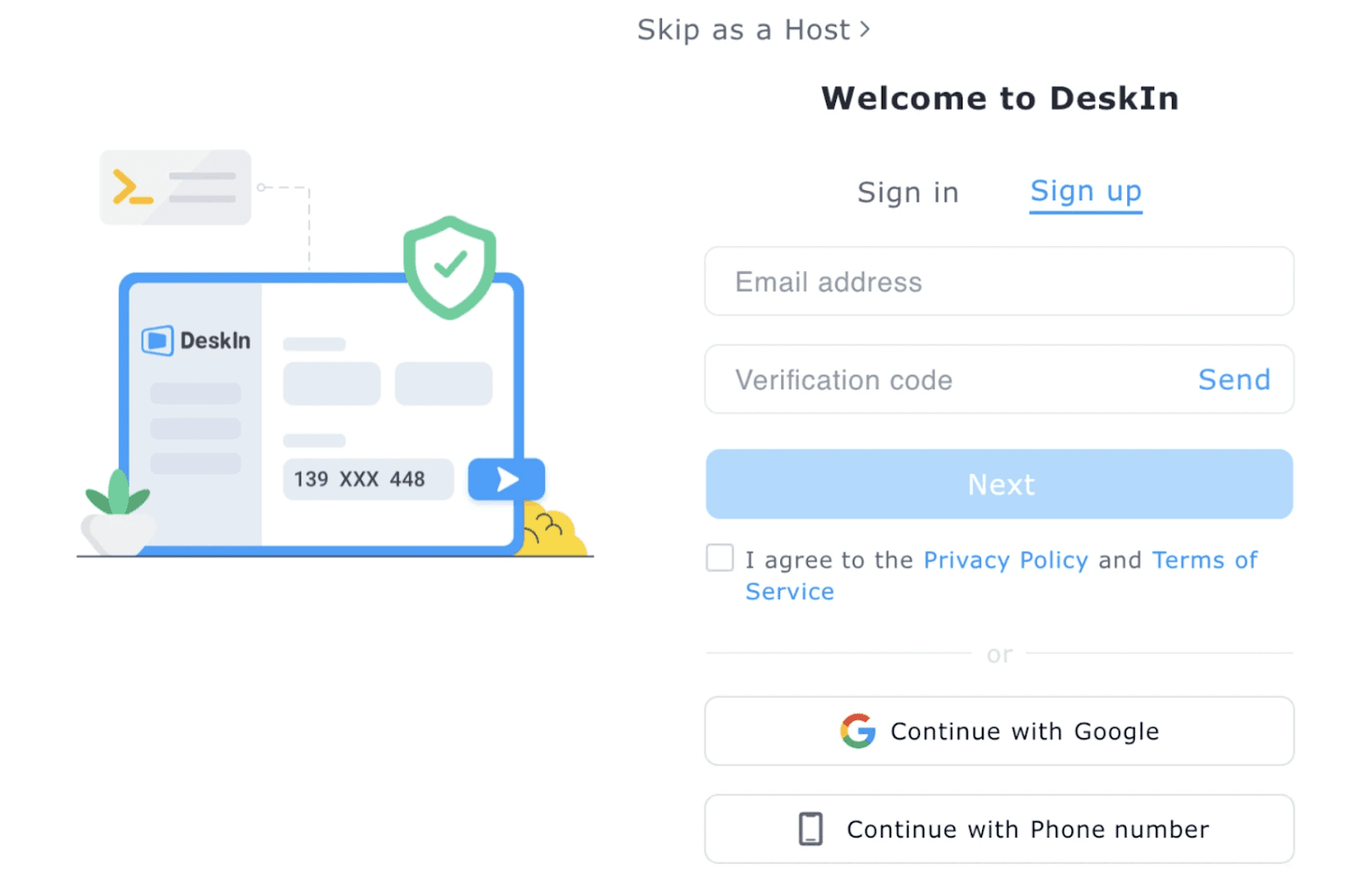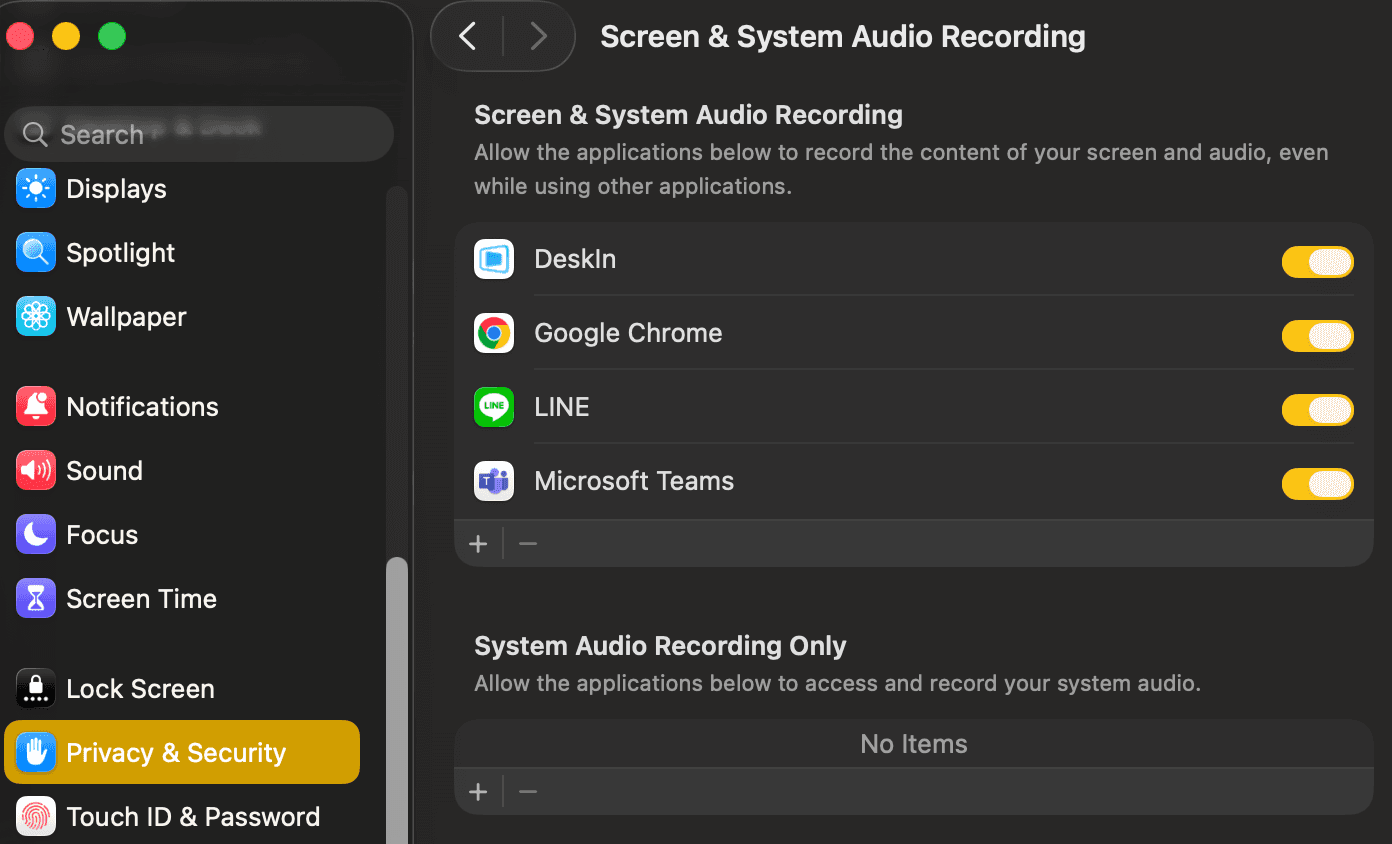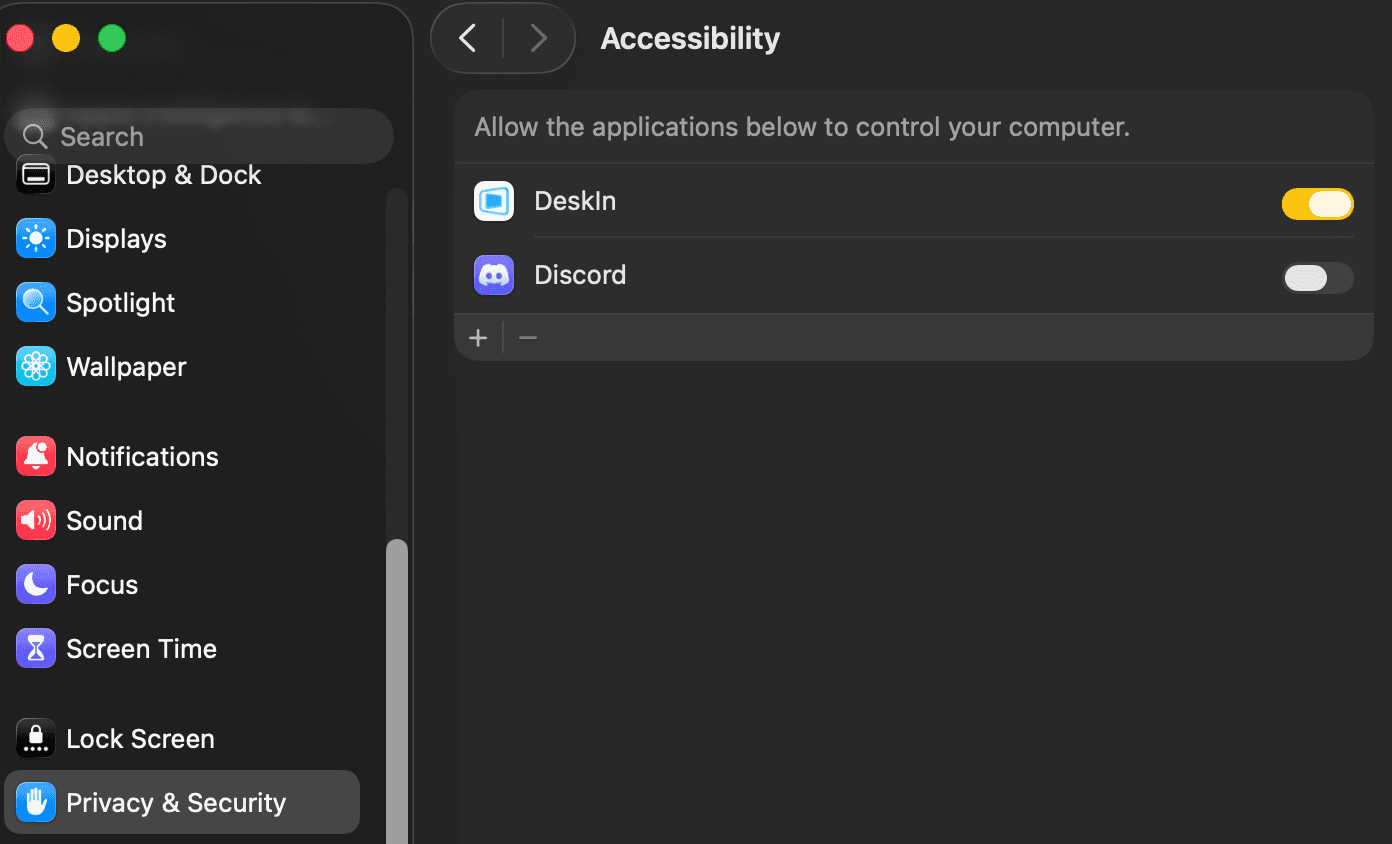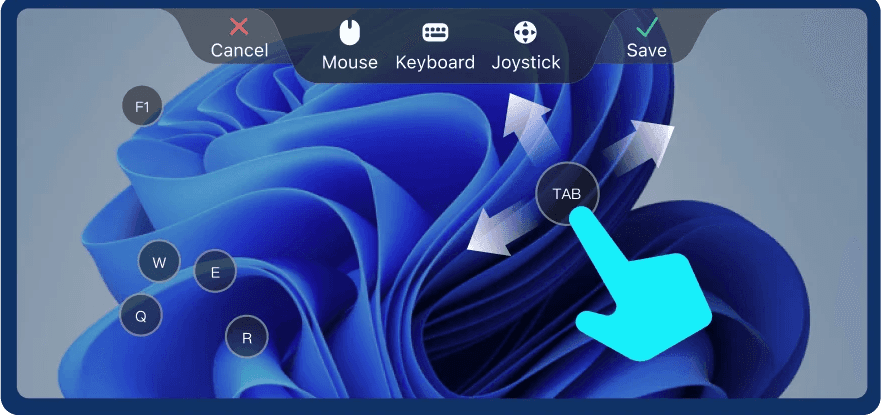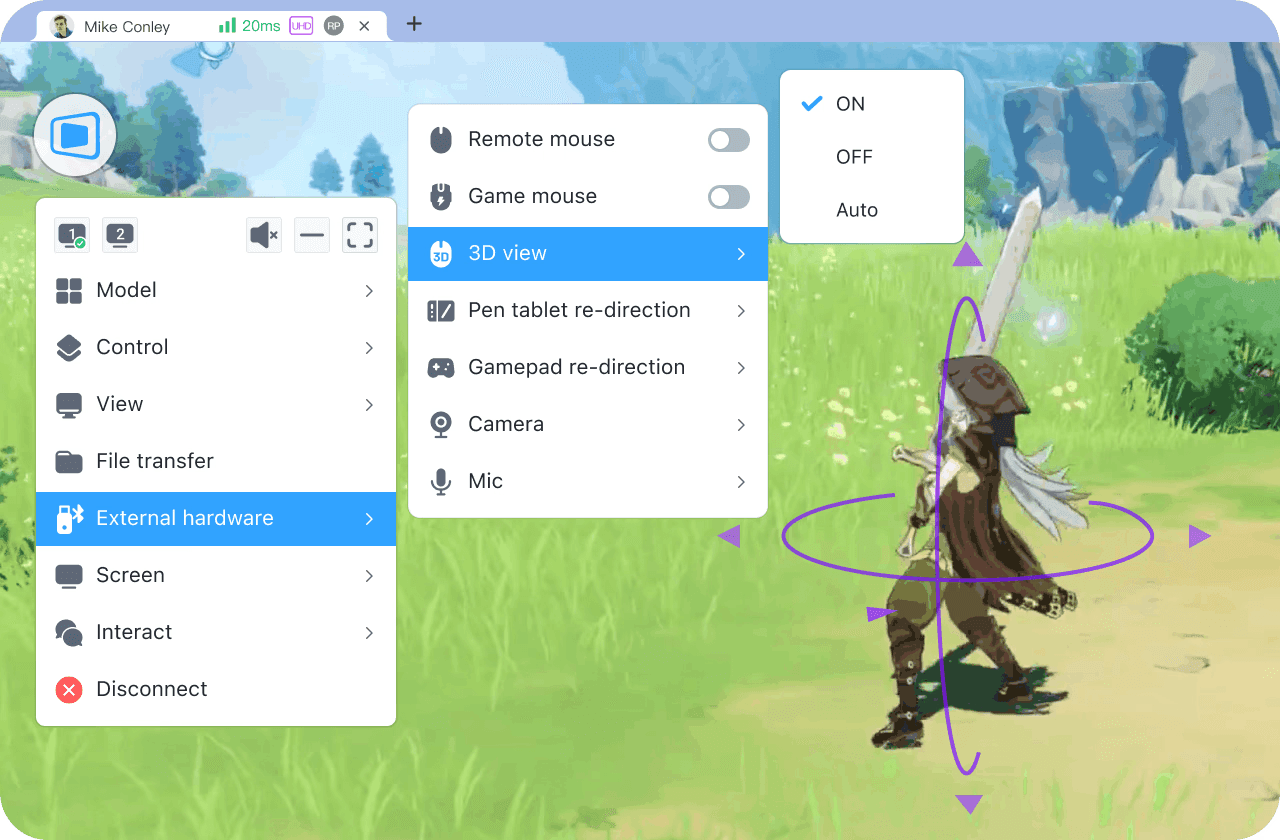AnyDeskは、高速で低遅延なクロスデバイス接続体験で知られる、世界で最も人気のあるリモートデスクトップツールの一つです。しかし、多くのユーザーがAnyDeskが接続しない、接続タイムアウト、またはDNSアドレスが見つからないなどの問題に直面しており、仕事中の中断、ファイル転送の失敗、リモートサポートの遅延を引き起こしています。
この記事では、最も簡単なものから高度な方法まで9つの効果的なトラブルシューティング方法を説明し、より安定して安全なAnyDeskの代替手段としてDeskInを推奨します—どんな状況下でもスムーズなリモートデスクトップ接続を維持するのを助けます。
リモートデスクトップ設定についてさらに知りたい場合は、これらの関連ガイドをご覧ください:
なぜAnyDeskが接続しないのか? 共通の原因を説明
AnyDeskを使用している時に、「接続できない」、「接続がタイムアウトした」または「DNSアドレスが見つからない」というメッセージが表示された場合、通常これは単一の問題で引き起こされるわけではありません。以下の表は最も一般的な状況とその可能性のある原因を要約し、問題をすばやく特定するのを助けます:
問題タイプ | 主な原因 | 対応する修正 |
1. ネットワークの問題 | 不安定なWi-Fi、遅延、VPN帯域使用量 | ✅ ステップ1: ネットワークを確認し再接続 |
2. ファイアウォールのブロック | AnyDeskポート(7070、6568)がブロックされている | ✅ ステップ2: ファイアウォールを通過させ許可 |
3. ソフトウェアの古さ | バージョンの非互換性 | ✅ ステップ3: AnyDeskを更新または再インストール |
4. IDの不正確さ | 誤った、変更された、または削除されたID | ✅ ステップ4: リモートデバイスIDを確認 |
5. サーバーの問題 | AnyDeskサーバーがメンテナンス中 | ✅ ステップ5: AnyDeskサーバーのステータスを確認 |
6. DNSエラー | DNSキャッシュまたは構成の問題 | ✅ ステップ6: DNSをリセットまたは変更 |
7. VPN/プロキシの干渉 | VPNまたはプロキシの帯域制限 | ✅ ステップ7: VPN/プロキシを無効にする |
8. 背景の競合 | ウイルス対策ソフトやスタートアップアプリの干渉 | ✅ ステップ8: クリーンブートを実行 |
9. リモートデスクトップの競合 | 他のリモートコントロールアプリが稼働中 | ✅ ステップ9: 他のリモートアプリを閉じる |
問題が多すぎて一つ一つ確認できない?
DeskInをダウンロード — より安定したリモートデスクトップソフトウェアで、マルチプラットフォームのログインと200以上のグローバルノードをサポートして、すべての接続問題を一度に解決します。

ここでリモート接続設定についてもっと学びましょう:
AnyDesk接続問題を修正するための9つの簡単な方法
「AnyDeskが接続しない」または「接続タイムアウト」というメッセージが繰り返し表示される場合、心配しないでください! 以下は技術的なスキルを必要とせずに接続を復元するための9つの簡単で効果的な修正方法です。
方法1: ネットワーク接続が安定しているか確認
AnyDesk接続問題の最も一般的な原因の一つは、不安定または高遅延なインターネットです。接続を確認して適切な通信を確保してください。
ステップ:
Win + Rを押し、
cmdと入力してEnterキーを押します。ping -t 8.8.8.8と入力して応答時間を確認します。大きく変動したりパケットを落とす場合、ネットワークが不安定です。Speedtestを使用してインターネット速度をテストします。ルーターを再起動または有線接続に切り替えることで、より良い安定性を確認してください。

速度が問題ないにもかかわらず接続が失敗する場合は、次のステップに進んでください。
手間がかかりすぎ?
DeskInを試してみてください — 使用が簡単で非常に安定しており、200以上のグローバルノードによるシームレスなリモートアクセスを可能にします。

方法2: ファイアウォールを通過させる
Windowsファイアウォールやウイルス対策ソフトウェアが、誤ってAnyDeskをブロックすることがあります。インターネットが問題ないのに接続が失敗する場合は、ファイアウォールの設定を確認してください。
ステップ:
Win + Sを押し、「Windowsファイアウォールを通過するアプリを許可する」を検索します。
「設定変更」をクリックし、AnyDeskを見つけて、プライベートとパブリックネットワークの両方を許可します。
リストになければ、「別のアプリを許可する」をクリックし、AnyDeskの実行ファイルを手動で追加します。
ウイルス対策ソフトウェア(例: Kaspersky、Norton)を使用している場合は、ネットワーク設定 ≫ 例外に移動し、AnyDeskをホワイトリストに登録してください。
例 (Kaspersky):
Kasperskyを開く → 設定のギアアイコンをクリックします。
セキュリティ設定 ≫ ネットワーク設定に進みます。
「すべてのポートを監視する」を「選択されたネットワークポートのみ監視する」に変更します。
方法3: AnyDeskを更新または再インストール
頻繁に接続が切断される場合は、アプリが旧式で最新のサーバーバージョンに対応していない可能性があります。最新バージョンを更新または再インストールしてください。
ステップ:
AnyDeskを開く → 設定 ≫ アクセス ≫ アップデートに進み → 自動アップデートを有効にします。
アップデートが失敗した場合は、古いバージョンをアンインストールし、公式AnyDeskウェブサイトから最新のインストーラーをダウンロードします。

まだ動作しない? よりスムーズで信頼性が高く、優れたマルチプラットフォームの互換性を提供するDeskInを試してください。

方法4: リモートデバイスIDを確認
「リモートデバイスが接続を受け入れない」エラーは、IDの不正確さが原因で発生することがよくあります。両方の端末で同じ9桁のコードを入力していることを確認してください。
一般的な間違いには以下のものがあります:
数字の0と英字のOの混同
タイプミスまたはセグメントの欠損
古いまたはリセットされたデバイスIDを使用する

複数のデバイスに頻繁に接続する場合、DeskInはすべてのデバイスIDを自動的に保存し、ワンクリックアクセスを可能にします—再入力する必要はありません。

方法5: AnyDeskサーバーのステータスを確認
時折問題はAnyDesk側にあります。サーバーがメンテナンス中または一時的にダウンしていないか確認してください:
Downdetectorを訪れ、ユーザー報告を確認します。
AnyDesk公式サイトでメンテナンスのお知らせを確認します。

方法6: 「DNSアドレスが見つからない」を修正する
「DNSアドレスが見つからない」と表示される場合、通常は期限切れのDNSキャッシュまたはプロキシの誤設定が原因です。
ステップ:
Win + Sを押して
cmdを入力し、右クリックして管理者として実行を選択します。次のコマンドを一つずつ入力します:
ipconfig /releaseipconfig /renewipconfig /flushdnsAnyDeskを再起動し、再度接続をテストしてください。
方法7: VPNまたはプロキシを無効化する
VPNやプロキシ(特にHiNetプロキシ)はAnyDeskを遅くするかブロックすることがあります。
ステップ:
一時的にVPNソフトウェア(例: SurfsharkやExpressVPN)を無効にします。
Windowsのプロキシ設定を確認: Win + Rを押し、
inetcpl.cplを入力 → 「接続」タブに切り替え、プロキシが有効か確認します。ローカルネットワークプロバイダの推奨DNS設定に切り替えます。
または単にDeskInを使用してください—VPNの問題なくグローバルルーティングを自動的に最適化します。

方法8: クリーンブートを実行して競合を回避する
バックグラウンドのプロセスやウイルス対策プログラムがAnyDeskに干渉することがあります。
ステップ:
Win + Rを押し
msconfigと入力し、Enterキーを押します。一般タブで選択起動を選択し、「スタートアップ項目を読み込む」をチェック解除します。
サービスに進み、「すべてのMicrosoftサービスを非表示」にチェックを入れ、次に「すべて無効」をクリックします。
PCを再起動してAnyDeskを再度テストします。ウイルス対策ソフトウェアを使用している場合は、一時的に無効化し、タスクマネージャーで完全に閉じていることを確認してください。
方法9: 他のリモートデスクトップアプリを閉じる
多くのリモートコントロールツール(例えば、TeamViewer、Chrome Remote Desktop)を同時に動作させると競合が発生します。接続の失敗を防ぐために他のアプリを無効化またはアンインストールしてください。また、IPv6を無効化を試すこともできます(一部のISPが問題を引き起こします):
コントロールパネル → ネットワークとインターネット → ネットワーク接続に進みます。
アクティブなアダプターを右クリック → プロパティ → 「インターネットプロトコルバージョン6(TCP/IPv6)」のチェックを外します。
PCを再起動します。
より安定した & より高速な代替手段 — DeskIn
AnyDeskの接続の失敗、視覚ラグ、またはぼやけた画面共有にうんざりしている場合は、DeskInを試してみてください — 信頼できる高性能なリモートデスクトップソフトウェアです。
DeskInは200+のグローバルノード、インテリジェントルーティング、4K60FPS / 2K144FPSストリーミングを<40msのレイテンシーで提供します。無料でマルチプラットフォーム対応でありながら、プレミアム機能を含んでいます:
リモートスタート/シャットダウン
音声チャット
スクリーン拡張 & プロジェクション
プライバシーモード
モバイルとウェブのアクセス
DeskInは無料で複数の高度な機能を提供し、AnyDeskより安定した接続体験と完全なクロスプラットフォームサポートを提供します — 長期のリモートコントロールに最適な選択です。
3つの簡単なステップ:
両方のコンピューターにDeskInをインストール(Windows/macOS)し、同じアカウントでログインします。


リストからデバイスを選択 → リモートコントロールをクリックしてください。

セッション中にファイルを転送、画面を共有、または通話します。

FAQ — 主要なトラブルシューティングポイント
「リモートデバイスが接続を受け入れない」と表示されるのはなぜですか?
通常、IDの不正確さ、不十分な権限、またはファイアウォールのブロックが原因です。ネットワーク設定を確認するか、a id="67">
DeskInへの切り替えで即座にアクセス可能です。
iPhoneでAnyDeskが動作しない?
通常、不安定なWi-Fi、旧式のアプリ、またはシステム互換性の問題が原因です。再起動、更新、またはよりスムーズなiOSパフォーマンスを提供するa id="68">DeskIn
を使用してください。
他にどんなリモートデスクトップアプリを使用できますか?
代替手段にはTeamViewerやChrome Remote Desktopがありますが、DeskInはよりスムーズで高品質な体験を提供し、制限が少ないです。
今後の接続問題を防ぐにはどうすればよいですか?
ソフトウェアを常に更新し、安定したインターネットを確保し、ファイアウォールを適切に設定してください。または、単にDeskInを使用するだけで安定し、安全で使いやすいです。
結論: AnyDesk接続問題を最も早く、最も簡単に修正する方法
このガイドでは、ネットワークステータスの確認、ソフトウェアの更新、VPNとIPv6の無効化など、AnyDesk接続障害を修正するための9つの簡単で効果的な方法を紹介しました。
よりシンプルで信頼性の高いソリューションを希望する場合は、DeskInが最適です。直感的で安定し、複数のプラットフォームをサポートしており、リモート作業、教育、またはコラボレーションに最適です。
👉 今すぐDeskInを試してください— よりスムーズで安全なリモートデスクトップ体験をお楽しみください。

AnyDeskは、高速で低遅延なクロスデバイス接続体験で知られる、世界で最も人気のあるリモートデスクトップツールの一つです。しかし、多くのユーザーがAnyDeskが接続しない、接続タイムアウト、またはDNSアドレスが見つからないなどの問題に直面しており、仕事中の中断、ファイル転送の失敗、リモートサポートの遅延を引き起こしています。
この記事では、最も簡単なものから高度な方法まで9つの効果的なトラブルシューティング方法を説明し、より安定して安全なAnyDeskの代替手段としてDeskInを推奨します—どんな状況下でもスムーズなリモートデスクトップ接続を維持するのを助けます。
リモートデスクトップ設定についてさらに知りたい場合は、これらの関連ガイドをご覧ください:
なぜAnyDeskが接続しないのか? 共通の原因を説明
AnyDeskを使用している時に、「接続できない」、「接続がタイムアウトした」または「DNSアドレスが見つからない」というメッセージが表示された場合、通常これは単一の問題で引き起こされるわけではありません。以下の表は最も一般的な状況とその可能性のある原因を要約し、問題をすばやく特定するのを助けます:
問題タイプ | 主な原因 | 対応する修正 |
1. ネットワークの問題 | 不安定なWi-Fi、遅延、VPN帯域使用量 | ✅ ステップ1: ネットワークを確認し再接続 |
2. ファイアウォールのブロック | AnyDeskポート(7070、6568)がブロックされている | ✅ ステップ2: ファイアウォールを通過させ許可 |
3. ソフトウェアの古さ | バージョンの非互換性 | ✅ ステップ3: AnyDeskを更新または再インストール |
4. IDの不正確さ | 誤った、変更された、または削除されたID | ✅ ステップ4: リモートデバイスIDを確認 |
5. サーバーの問題 | AnyDeskサーバーがメンテナンス中 | ✅ ステップ5: AnyDeskサーバーのステータスを確認 |
6. DNSエラー | DNSキャッシュまたは構成の問題 | ✅ ステップ6: DNSをリセットまたは変更 |
7. VPN/プロキシの干渉 | VPNまたはプロキシの帯域制限 | ✅ ステップ7: VPN/プロキシを無効にする |
8. 背景の競合 | ウイルス対策ソフトやスタートアップアプリの干渉 | ✅ ステップ8: クリーンブートを実行 |
9. リモートデスクトップの競合 | 他のリモートコントロールアプリが稼働中 | ✅ ステップ9: 他のリモートアプリを閉じる |
問題が多すぎて一つ一つ確認できない?
DeskInをダウンロード — より安定したリモートデスクトップソフトウェアで、マルチプラットフォームのログインと200以上のグローバルノードをサポートして、すべての接続問題を一度に解決します。

ここでリモート接続設定についてもっと学びましょう:
AnyDesk接続問題を修正するための9つの簡単な方法
「AnyDeskが接続しない」または「接続タイムアウト」というメッセージが繰り返し表示される場合、心配しないでください! 以下は技術的なスキルを必要とせずに接続を復元するための9つの簡単で効果的な修正方法です。
方法1: ネットワーク接続が安定しているか確認
AnyDesk接続問題の最も一般的な原因の一つは、不安定または高遅延なインターネットです。接続を確認して適切な通信を確保してください。
ステップ:
Win + Rを押し、
cmdと入力してEnterキーを押します。ping -t 8.8.8.8と入力して応答時間を確認します。大きく変動したりパケットを落とす場合、ネットワークが不安定です。Speedtestを使用してインターネット速度をテストします。ルーターを再起動または有線接続に切り替えることで、より良い安定性を確認してください。

速度が問題ないにもかかわらず接続が失敗する場合は、次のステップに進んでください。
手間がかかりすぎ?
DeskInを試してみてください — 使用が簡単で非常に安定しており、200以上のグローバルノードによるシームレスなリモートアクセスを可能にします。

方法2: ファイアウォールを通過させる
Windowsファイアウォールやウイルス対策ソフトウェアが、誤ってAnyDeskをブロックすることがあります。インターネットが問題ないのに接続が失敗する場合は、ファイアウォールの設定を確認してください。
ステップ:
Win + Sを押し、「Windowsファイアウォールを通過するアプリを許可する」を検索します。
「設定変更」をクリックし、AnyDeskを見つけて、プライベートとパブリックネットワークの両方を許可します。
リストになければ、「別のアプリを許可する」をクリックし、AnyDeskの実行ファイルを手動で追加します。
ウイルス対策ソフトウェア(例: Kaspersky、Norton)を使用している場合は、ネットワーク設定 ≫ 例外に移動し、AnyDeskをホワイトリストに登録してください。
例 (Kaspersky):
Kasperskyを開く → 設定のギアアイコンをクリックします。
セキュリティ設定 ≫ ネットワーク設定に進みます。
「すべてのポートを監視する」を「選択されたネットワークポートのみ監視する」に変更します。
方法3: AnyDeskを更新または再インストール
頻繁に接続が切断される場合は、アプリが旧式で最新のサーバーバージョンに対応していない可能性があります。最新バージョンを更新または再インストールしてください。
ステップ:
AnyDeskを開く → 設定 ≫ アクセス ≫ アップデートに進み → 自動アップデートを有効にします。
アップデートが失敗した場合は、古いバージョンをアンインストールし、公式AnyDeskウェブサイトから最新のインストーラーをダウンロードします。

まだ動作しない? よりスムーズで信頼性が高く、優れたマルチプラットフォームの互換性を提供するDeskInを試してください。

方法4: リモートデバイスIDを確認
「リモートデバイスが接続を受け入れない」エラーは、IDの不正確さが原因で発生することがよくあります。両方の端末で同じ9桁のコードを入力していることを確認してください。
一般的な間違いには以下のものがあります:
数字の0と英字のOの混同
タイプミスまたはセグメントの欠損
古いまたはリセットされたデバイスIDを使用する

複数のデバイスに頻繁に接続する場合、DeskInはすべてのデバイスIDを自動的に保存し、ワンクリックアクセスを可能にします—再入力する必要はありません。

方法5: AnyDeskサーバーのステータスを確認
時折問題はAnyDesk側にあります。サーバーがメンテナンス中または一時的にダウンしていないか確認してください:
Downdetectorを訪れ、ユーザー報告を確認します。
AnyDesk公式サイトでメンテナンスのお知らせを確認します。

方法6: 「DNSアドレスが見つからない」を修正する
「DNSアドレスが見つからない」と表示される場合、通常は期限切れのDNSキャッシュまたはプロキシの誤設定が原因です。
ステップ:
Win + Sを押して
cmdを入力し、右クリックして管理者として実行を選択します。次のコマンドを一つずつ入力します:
ipconfig /releaseipconfig /renewipconfig /flushdnsAnyDeskを再起動し、再度接続をテストしてください。
方法7: VPNまたはプロキシを無効化する
VPNやプロキシ(特にHiNetプロキシ)はAnyDeskを遅くするかブロックすることがあります。
ステップ:
一時的にVPNソフトウェア(例: SurfsharkやExpressVPN)を無効にします。
Windowsのプロキシ設定を確認: Win + Rを押し、
inetcpl.cplを入力 → 「接続」タブに切り替え、プロキシが有効か確認します。ローカルネットワークプロバイダの推奨DNS設定に切り替えます。
または単にDeskInを使用してください—VPNの問題なくグローバルルーティングを自動的に最適化します。

方法8: クリーンブートを実行して競合を回避する
バックグラウンドのプロセスやウイルス対策プログラムがAnyDeskに干渉することがあります。
ステップ:
Win + Rを押し
msconfigと入力し、Enterキーを押します。一般タブで選択起動を選択し、「スタートアップ項目を読み込む」をチェック解除します。
サービスに進み、「すべてのMicrosoftサービスを非表示」にチェックを入れ、次に「すべて無効」をクリックします。
PCを再起動してAnyDeskを再度テストします。ウイルス対策ソフトウェアを使用している場合は、一時的に無効化し、タスクマネージャーで完全に閉じていることを確認してください。
方法9: 他のリモートデスクトップアプリを閉じる
多くのリモートコントロールツール(例えば、TeamViewer、Chrome Remote Desktop)を同時に動作させると競合が発生します。接続の失敗を防ぐために他のアプリを無効化またはアンインストールしてください。また、IPv6を無効化を試すこともできます(一部のISPが問題を引き起こします):
コントロールパネル → ネットワークとインターネット → ネットワーク接続に進みます。
アクティブなアダプターを右クリック → プロパティ → 「インターネットプロトコルバージョン6(TCP/IPv6)」のチェックを外します。
PCを再起動します。
より安定した & より高速な代替手段 — DeskIn
AnyDeskの接続の失敗、視覚ラグ、またはぼやけた画面共有にうんざりしている場合は、DeskInを試してみてください — 信頼できる高性能なリモートデスクトップソフトウェアです。
DeskInは200+のグローバルノード、インテリジェントルーティング、4K60FPS / 2K144FPSストリーミングを<40msのレイテンシーで提供します。無料でマルチプラットフォーム対応でありながら、プレミアム機能を含んでいます:
リモートスタート/シャットダウン
音声チャット
スクリーン拡張 & プロジェクション
プライバシーモード
モバイルとウェブのアクセス
DeskInは無料で複数の高度な機能を提供し、AnyDeskより安定した接続体験と完全なクロスプラットフォームサポートを提供します — 長期のリモートコントロールに最適な選択です。
3つの簡単なステップ:
両方のコンピューターにDeskInをインストール(Windows/macOS)し、同じアカウントでログインします。


リストからデバイスを選択 → リモートコントロールをクリックしてください。

セッション中にファイルを転送、画面を共有、または通話します。

FAQ — 主要なトラブルシューティングポイント
「リモートデバイスが接続を受け入れない」と表示されるのはなぜですか?
通常、IDの不正確さ、不十分な権限、またはファイアウォールのブロックが原因です。ネットワーク設定を確認するか、a id="67">
DeskInへの切り替えで即座にアクセス可能です。
iPhoneでAnyDeskが動作しない?
通常、不安定なWi-Fi、旧式のアプリ、またはシステム互換性の問題が原因です。再起動、更新、またはよりスムーズなiOSパフォーマンスを提供するa id="68">DeskIn
を使用してください。
他にどんなリモートデスクトップアプリを使用できますか?
代替手段にはTeamViewerやChrome Remote Desktopがありますが、DeskInはよりスムーズで高品質な体験を提供し、制限が少ないです。
今後の接続問題を防ぐにはどうすればよいですか?
ソフトウェアを常に更新し、安定したインターネットを確保し、ファイアウォールを適切に設定してください。または、単にDeskInを使用するだけで安定し、安全で使いやすいです。
結論: AnyDesk接続問題を最も早く、最も簡単に修正する方法
このガイドでは、ネットワークステータスの確認、ソフトウェアの更新、VPNとIPv6の無効化など、AnyDesk接続障害を修正するための9つの簡単で効果的な方法を紹介しました。
よりシンプルで信頼性の高いソリューションを希望する場合は、DeskInが最適です。直感的で安定し、複数のプラットフォームをサポートしており、リモート作業、教育、またはコラボレーションに最適です。
👉 今すぐDeskInを試してください— よりスムーズで安全なリモートデスクトップ体験をお楽しみください。








